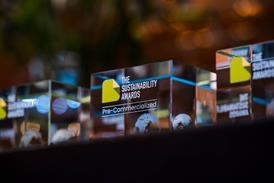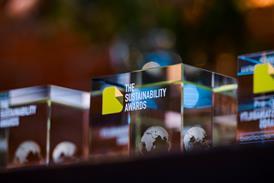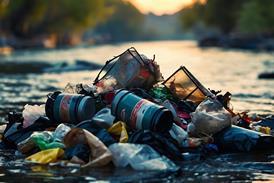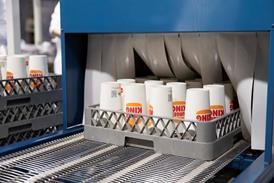
Earlier this month, McDonald’s Japan revealed that it would replace paper straws with a ‘strawless’ rPET lid. Reactions varied across the board – but Dan Coppins, packaging technologist and sustainability consultant at Pack-Man Consulting, makes a case for the new lid from a functional, environmental, and business perspective.
McDonald’s Japan have announced and enacted a change to their packaging on cold beverages. This change is a shift that benefits the recyclability, commercials and carbon footprint of the pack.
What is it? We are talking about the change to the paper cup’s closure. A new lid design was developed to allow the complete removal of the straw, a component that has caused much controversy across the globe. The lid is both product and package, delivering your cool beverage to you in a convenient manner.
For years, we have seen the landscape changing. This started with the ban on plastic straws back in 2020, leading to the forced introduction of paper straws.
These, however, were not immune to scrutiny, and although the consumer believed this was an improvement on the plastic straw, the reality is that these paper straws were not recyclable, nor did they break down in the environment in the way people assumed. They were higher cost to the brand and have a net higher carbon footprint than the polymer they replaced.
Further to this, there were mass complaints around these straws failing before the product was finished, meaning that many consumers doubled their use of straws per drink consumed! This was not ideal. These failings could also be a risk to the business’ reputation for providing packaging that was not fit for purpose.
This is where a full redesign and reconsideration of delivery enable a real revolution in this area: the removal of the straw altogether. This supported the long-standing campaign of “Refuse the Straw”, which helped lead to the plastic ban in straws – however, this solution takes it one step further and enacts the overall goal of the campaign.
What are the benefits of no straw? Well, that is one less component to be made in a factory, one less component to be shipped to stores, one less component given to the consumer and one less component that can be disposed of irresponsibly.
It solves the issue of recyclability, as it takes the component away altogether – replacing with a PET solution, which is the most recycled polymer globally! In addition to this, the PET ‘sippy lid’ will be cheaper than a lid and straw combination, as well as having a marked reduction in the carbon required to produce (that’s before factoring in the carbon savings of shipping these around the world!).
Other benefits? McDonald’s will be able to save lorries on the roads, space in warehouses (which use energy and have a carbon cost), but also remain convenient to the consumer in the consumption of the product. These lids are already in use in the German market, and it is completely normal.
Downsides? There is no such thing as a perfect solution – so as such, there are concerns that dictating the removal of straws is taking away consumer choice. There are some concerns about the increase in product contact with teeth, too – however, this is not a packaging issue as such, and more of a consumption behaviour (which is a choice).
In summary, the changes here are both profitable from McDonald’s perspective, but it also sees a return to a recyclable material. This could be taken further, of course, with the removal of lids, and the encouragement of reusable containers bought by the consumer – however, this can also lead to challenges. There is no silver bullet to any packaging challenge, but the changes we have seen here certainly feel like an overall net positive.
Dan Coppins runs a consultancy business to provide brands with general packaging advice and support, helping brands with product development, cost savings, and packaging-related challenges. The consultancy helps brands of all sizes, from micro-brands to global leaders.
If you liked this story, you might also enjoy:
The ultimate guide to the Packaging and Packaging Waste Regulation in 2025
How are the top brands progressing on packaging sustainability?
Everything you need to know about global packaging sustainability regulation in 2025
The key to increasing the use of reusable packaging in supermarkets





















No comments yet